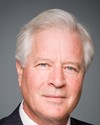Mr. Speaker, there is growing evidence that wireless technology may be detrimental to our health and that the current Safety Code 6 is outdated. In this regard, I would like to thank my colleague from Oakville for introducing Bill C-648, which would require health warning labels on wireless devices. This is a logical first step.
I am also pleased to see that the health committee is taking the time to study this issue. Unfortunately, instead of applying the precautionary principle, various jurisdictions across North America have been ramming wireless smart meters down our throats. A number of people are sensitive to electromagnetic radiation or have other health concerns and have refused this technology.
BC Hydro charges a punitive opt-out fee of $32.40 per month. Several Slocan Valley residents who rejected this technology have gone through the winter with their electricity disconnected. This is completely unacceptable. The very least that the B.C. government could do would be to adopt the more reasonable Quebec model of a $15 opt-out fee and a monthly charge of $5.
B.C. residents deserve better.


